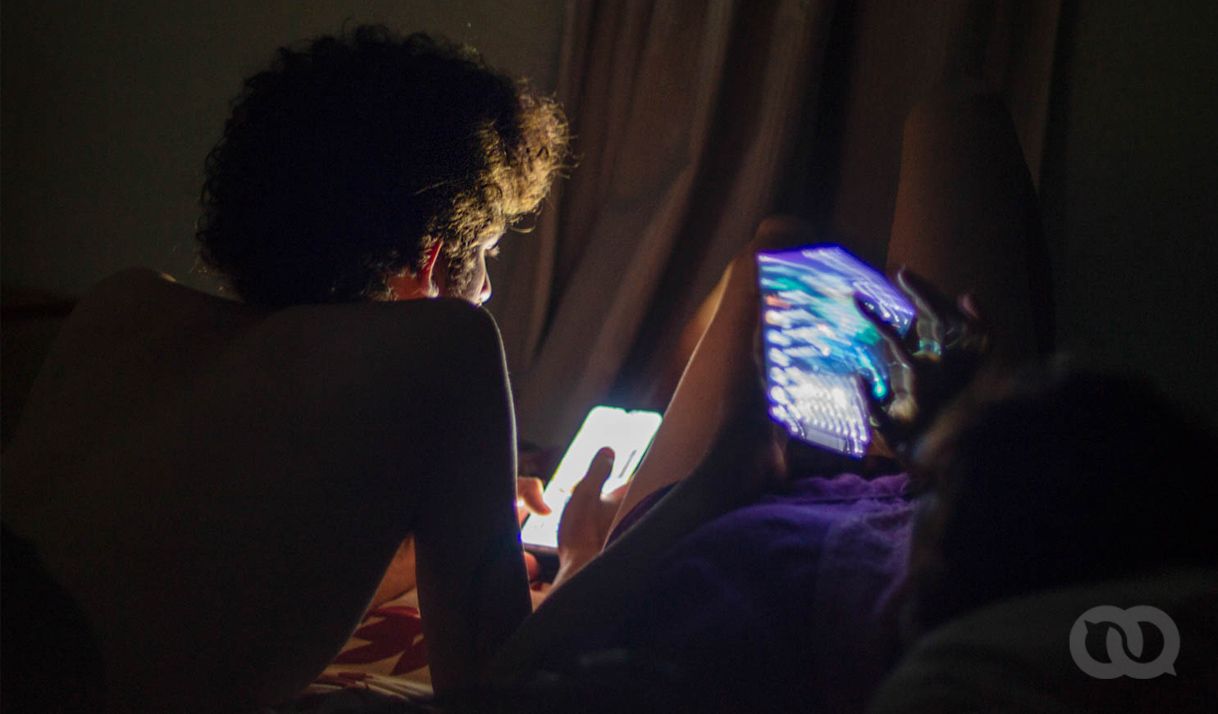“Put the electricity back on, pin**! was a demand that became a conga line protest after a 15-hour blackout at the Universidad de Camaguey. The video, that went viral on social media, showed a reality that isn’t new at higher education centers in Cuba.
“Everything happened on June 15th. There hadn’t been any electricity since 6 AM, and they put it on at 7 PM. It was supposedly only for 12 hours, but they cut it again fifteen minutes later,” a student in Camaguey says. “It annoyed people and they began to sing from their balconies until they went down to Plaza Cultural and the conga that we saw on the Internet came together.
According to the third-year Electrical Engineering student, dinner that day had been soup with white rice and an egg, which made the students even more annoyed.
“I don’t know if it was because of the blackout, but coming home sweaty and tired of sports games, and not having electricity or water to shower, is too much,” he said.
Universidad de Camaguey has been suffering 8-12 hour blackouts everyday, just like the rest of the province, ever since the latest energy crisis began in March.
“These bothersome blackouts also impact the water supply system at the university, making it practically impossible to get to the third and fourth floor apartments in student accommodation over the past week,” an article in Adelante newspaper read.
However, the almost three-hour extension wasn’t due to the electricity company’s (UNE) planning, but to an overload at the residential block that includes the Agramonte headquarters.
While information in the newspaper and on the University website differs in terms of how long it took for the electricity came back, the local newspaper admitted that the response from those responsible for fixing the blackout problem came “late”.
Switching off self-study
It’s 1 AM and there are two young women in the living room of the women’s residence at a Cuban university. The first shift have a Calculus exam and feel like they haven’t studied enough. Stretched out on the floor, with light coming from the only bulb in the corridor, they revise equations from textbooks and notebooks. The electricity came back two hours ago, they couldn’t study before.
“We aren’t final year students, we’ve also had to revise for other subjects,” Martha Elena explains in a WhatsApp voice message. “The first years of Mechanical Engineering are the hardest, but completing the year with food and water shortages and blackouts, is a great feat.”
“Not doing anything,” “copying work” and “trying to follow educational and recreational activities that don’t require electricity” were some students’ responses to the question “what do you do when there’s a blackout?”, and others belonging to a form that was handed out before writing this article.
It was established that the situation in different universities is very similar across the country: blackouts in the evenings/night are the most annoying because they make it hard for students to study on their own and take part in recreational activities.
“We have to sit on a staircase, down a corridor or a place with electricity,” a Journalism student at the “Martha Abreu” Central University in Las Villas said. “Sometimes, it’s even dangerous because you have to walk through places that are pitch black. It’s a good thing we have cellphones with a flashlight.”
Young university students from almost every generation are familiar with blackouts: whether it’s because of irregularities with the National Grid or because of structural problems and overconsumption at student residences with kitchens and improvised stoves that are turned on during “peak hours”.
Water tank pumps, refrigeration rooms in dining halls, pots, boilers and lights are high energy-consuming appliances at Cuban educational centers. Many stop working during blackouts. Education-related places and services like labs, libraries, WIFI connections, etc. also stop working.
“Being in the “hospital area” of the city doesn’t even save us from blackouts,” Jorge Lopez says, a student from the University of Medical Sciences in Las Tunas. “When I know there’s going to be a blackout all night and I need to study, I go to my aunt’s house, but not every student has this opportunity.”
According to him, another option they have is to take advantage of the sun in their free afternoons to study or they all gather around a classmate’s laptop in the night. “But there isn’t enough battery or eyesight that can put up with it,” she says.
What’s going on at university?
Several Cuban universities have an Energy Efficiency Management System, with people in charge of controlling consumption and forcing savings by cutting down lab hours, turning off air-conditioning units and other measures that reduce energy consumption, but they damage devices and processes.
Although a study by the Universidad de Matanzas revealed that the Energy Efficiency System managers didn’t stay in the position for long because they find better paid opportunities and they constantly have to train new managers. Internal saving measures aren’t enough during the energy crisis. Education institutions are included in blocks and circuits established by region and they also have their own blackout schedule.
For example, Universidad de Camaguey is on four circuits, but two of them are residential mains with a blackout schedule: one that feeds the Jose Marti campus and the other that reaches the kitchen/diner and student residences in the Agramonte campus. The two remaining ones don’t have a fixed schedule: there are blackouts when necessary.
Roger Castro is well aware of the difference. He studies on the main campus and his girlfriend studies at the former University of Pedagogical Sciences, both of which are separated by a single avenue. “Depending on where the blackout is, I “slip away” to her university or she comes to mine,” he says.
After the June 15th conga, the university board held meetings with students to “explain” why there are blackouts.
In an interview with the Department of Communications, Davel Borges Vasconcellos, responsible for the Energy Efficiency and Green Energy program, explained that they are seeking alternatives so that blackouts don’t impact water pumps to student residences.
He added that one of these projects “seeks to use the generator that supplies the kitchen/diner, for the residence too. Once it’s connected, we’ll be able to have electricity in the residence and be able to pump water, even if there is no electricity supply here.
He added that this is a very ambitious project, and it needs a lot more resources and time, but they have the University’s support to do this.
Implementing these possible solutions announced after the “scandal” of the student conga could be postponed, or fall on deaf ears, like they normally do.
A 2012 study by Universidad de Las Tunas identified the main problems with energy consumption as: “the existence of many water leaks on the internal and external network that implied additional work for water pumps and the poor isolation of cold rooms and air-conditioned areas.”
High energy-consumption was also identified at the Student Residence, not using computer’s energy saving potential and poor and infrequent records of electricity consumption.
A decade later, many of these problems still await a solution or have become worse under stricter economic restrictions in Cuba.
Blackouts or modifying opening hours of services to save electricity during “energy crises”, form part of the karma of Cuba’s further education. This image has been repeated over the years and is like a deja-vu: during hot nights and blackouts, you can see students from the residence sitting on benches and in outdoor areas. Others prefer to stay in “living rooms”, “fighting off” the mosquitoes too.
This article was translated into English from the original in Spanish.











comments
We moderate comments on this site. If you want to know more details, read our Privacy Policy
Your email address will not be published. Mandatory fields are marked with *